Are you planning an unforgettable adventure in the beautiful Annapurna region of Nepal? Look no further than the Annapurna Base Camp Trek (ABC). This guide provides an in-depth look at the trekking route, covering everything from the best trails to the high altitude and the best times to visit.
The trek reaches 4130 meters at its highest point, offering breathtaking views of the world’s highest mountains and lush valleys. Whether you’re an experienced trekker or a first-time hiker, you’ll find plenty of valuable tips and hints to make your journey more enjoyable. Get ready for a trek that will stay with you for a lifetime!
Why is the Annapurna Base Camp (ABC) Trek famous?
Annapurna Base Camp Trek is one of the most popular treks in Nepal, taking you into the heart of the Annapurna range. Known as the Tea House Trek, it offers stunning views of the entire range, including Mt. Annapurna I, the 10th highest mountain in the world. You’ll pass through the small village and experience Nepalese culture and lifestyle in a beautiful mountain setting. Along the trail, you’ll pass through rhododendron and bamboo forests, terraced farming, and deep gorges, and the trek culminates at the Base Camp of Annapurna, at an elevation of 4130 metres (13,550 feet).
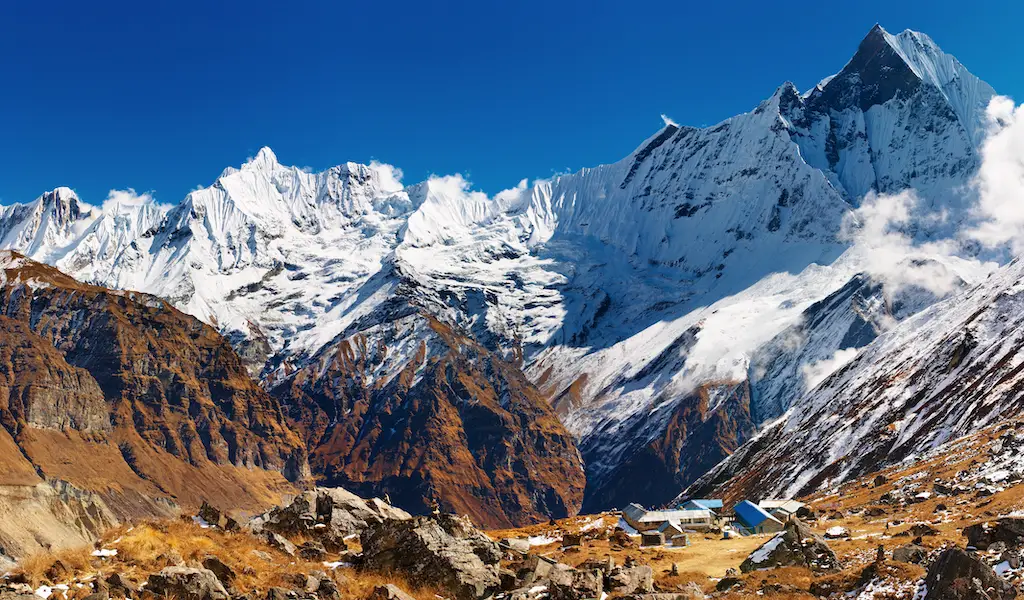
The Annapurna Base Camp Trek is famous for its spectacular mountain scenery, cultural diversity, and range of ecosystems that you will experience throughout this exciting journey.
How difficult is Annapurna Base Camp Trek?
This trek is considered moderate and doesn’t require advanced physical fitness. Anyone can enjoy nature walking during this trek, including those travelling with children. Trekking Annapurna Base Camp via Ghorepani helps your body adapt to high altitude and stay in better shape for physically demanding aerobic walks in thin-air areas. Visitors with previous trekking experience and a fit body can complete this trek quickly. The highest elevation reached on this trek is 4130 meters above sea level.
Itinerary for Annapurna Base Camp Trek (ABC)
Annapurna Base Camp (ABC) Trek is a rewarding experience in Nepal. Various itineraries are available for those looking to embark on the beautiful Annapurna Base Camp trek.
- 7-12 days – The trek’s itinerary varies from 7 to 12 days, depending on your time frame and level of physical fitness.
- 10-12 days – The 10-12 days itinerary includes trekking to Ghorepani Poon Hill, which helps with acclimatization. There is also a 2-day journey from Landruk, Tolka, Pothana and Dhampus to Phedi, which returns to Pokhara.
- 7 days – For those looking for a shorter journey, the 7-day trek from Pokhara via Nayapul, Jhunu, and Chhumrung & back to Nayapul along the Modi Khola River is the shortest and most rewarding route.
- 10 days – For those seeking a more extended adventure, the 10-day trek through Poon Hill Trek is the most popular option and provides a more comprehensive exploration of the area. Whichever you choose, the Annapurna Base Camp trek is sure to leave you with lasting memories.
Below is the itinerary of 9 days for the Annapurna Base Camp (ABC) Trek
DAY 1 – Reach Pokhara from Kathmandu
Drive distance: 215 km | Duration: 7 hours
Reach Pokhara by taking a bus or flying in from Kathmandu.
DAY 2 – Drive from Pokhara to Lower Ghandruk. Trek to Komrong
Drive Distance: 55 km | Duration: 3-4 hours | Altitude Gain: 2,760 ft to 5,415 ft
Trek Distance: 5 km | Duration: 3-4 hours | Altitude Gain: 5,415 ft to 7,380 ft
The Trek gradient is moderate.
DAY 3 -Trek from Komrong to Chhomrong
Trek Distance: 7 km | Duration: 5-6 hours | Altitude Loss: 7,380 ft to 7,120 ft
Starts with a short gradual descent for about an hour. An ascent to Chomrung follows this. You can refill your water bottles at tea houses on the way.
DAY 4 – Trek from Chhomrong to Dovan
Trek Distance: 10.50 km | Duration: 6-7 hours | Altitude Gain: 7,120 ft to 8,460 ft
Moderate-difficult. Initial descent for 20 minutes followed by a steep ascent for about an hour. Gradual ascent for half an hour followed by a steep 30-minute descent. Finish with a 2-hour ascent to Dovan. You can refill your water bottles at tea houses on the way.
DAY 5 – Trek from Dovan to Machapuchare Base Camp
Trek Distance: 10 km | Duration: 6-7 hours | Altitude Gain: 8,460 ft to 12,135 ft
Moderate-difficult. Begins with a gradual ascent. Proceeds in a series of incremental and steep ascents. You can refill your water bottles at tea houses on the way.
DAY 6 – Trek from Machapuchare Base Camp to Annapurna Base Camp
Trek Distance: 3.50 km | Duration: 2 hours | Altitude Gain: 12,135 ft to 13,550 ft
Moderate. Steep ascent in the beginning for about 1 km, after which the trail gradually ascends to ABC. You can refill your water bottles at tea houses on the way.
DAY 7 – Trek from Annapurna Base Camp to Bamboo
Trek Distance: 15.50 km | Duration: 8-9 hours | Altitude Loss: 13,550 ft to 7,675 ft
Moderate-difficult. A mix of steep and gradual descent, tracing the same route back. You can refill your water bottles at tea houses on the way.
DAY 8 – Trek from Bamboo to Jhinu
Trek Distance: 10 km | Duration: 6-7 hours | Altitude Loss: 7,675 ft to 5,770 ft
Moderate-difficult. Steep ascent for about 45 minutes, followed by steep descent for about 2 hours. Another steep descent for about 45 minutes, followed by a steeply descending trail. You can refill your water bottles at tea houses on the way.
DAY 9 – Trek from Jhinu to Syauli Bazaar. Drive to Pokhara
Trek Distance: 6 km | Duration: 4 hours | Altitude Loss: 5,770 ft 4,580 ft
Drive Distance: 45 km | Duration: 2-3 hours | Drop off point for
Easy-moderate. Steep descent for about 30 minutes, followed by gradual ascent. You can refill your water bottles at tea houses on the way.
Best Time to Trek Annapurna Base Camp Trek (ABC)
Trekking in the Annapurna region presents spectacular sights throughout the year. Mid-September to November (autumn) and March to May (spring) are generally considered the best months. June to August (monsoon) is rainy but ideal for keen botanists. Expect a stunning display of blooming rhododendron from March to May, and take advantage of the sunrise view of Mt. Dhaulagiri. The highlight of the trek is Poon Hill at dawn, offering a breathtaking panorama of the Himalayan giants – Dhaulagiri (8,167m) and Annapurna (8,091m), amid many other peaks.
For those wishing to avoid crowds, winter (December-February) offers great opportunities to witness the region’s beauty with limited trekking time. It’s cold in the mornings but warm during the day – and beautiful clear skies are guaranteed!
Annapurna Base Camp Trek Cost
The cost of the Annapurna Base Camp Trek typically ranges from USD 800 to 1,400 depending on the season, group size, trekking distance, and other details. The cost includes accommodation, food, transport, porters, guide services, permit fees, and other expenses related to the trek. In addition to the cost of the trek, travellers should also plan to bring cash for personal expenses and tips for the guides and porters.
Packing List for Annapurna Base Camp Trek (ABC)
If you’re planning to complete your trek without the assistance of a porter, you need to ensure you only bring a little. You don’t need a lot of equipment or belongings as you will spend each night at a guesthouse and will not be required to bring camping or cooking gear.
- Backpack: Make sure the pack’s capacity is over 70 litres, and the shoulder straps are well padded.
- Water bottle or hydration bladder: Choose water bottles that are insulated and/or BPA-free. Moreover, either carry a water filter or water filtering tablets.
- Trekking poles: These are essential for maintaining balance while trekking.
- Trekking clothes: Bring lightweight and breathable Merino wool base layers, insulating mid-layers, water-resistant outer layers, trekking boots, and sunglasses.
- Snow gear: If you are planning to summit the Annapurna, then you will need crampons, an ice axe, and a helmet.
- Headlamp: Choose an adjustable, waterproof, and rechargeable headlamp.
- First-aid kit: Pack antiseptic wipes, bandages, gauze pads, ibuprofen, cold and flu tablets, snake bite-kit, etc.
- Toiletries: Toothbrush, toothpaste, biodegradable shampoo, soap, etc.
- Miscellaneous: Sunscreen, lip balm, hat, gloves, maps, GPS, Swiss Army knife, energy bars, and digital camera.
Essential information about Guides and Permits
Obtaining the necessary permits for the trek is relatively straightforward. Visitors must get a TIMS (Trekkers Information Management System) and an Entry Permit for the Annapurna Conservation Area. Both of these permits can be purchased at the tourism office in Pokhara. Furthermore, if you are extending your stay in Nepal, the necessary visas can also be obtained here. The permits are checked along the route, so it is crucial to ensure that you have them before commencing your trek.
A TIMS (Trekkers’ Information Management System) Permit is required for all treks in the Annapurna Sanctuary National Park and costs NPR 3000. It should be noted that this permit is only valid for a single entry to the park, so if you plan to do several hikes in the National Park, it is essential to bear this in mind. Alternatively, you can obtain a local, national park permit, for which the fee is NPR 2000.
Culture, Tradition and Environment around Annapurna Base Camp Trek (ABC)
Annapurna Base Camp Trek (ABC) is a classic trek in Nepal that takes trekkers through stunning mountain views and deep lush valleys surrounded by ancient forests and picturesque villages. The trek offers trekkers an incredible opportunity to experience some of the most awe-inspiring mountain scenery while getting insight into the local people’s culture, traditions and environment.
Trekking to ABC allows adventurers to explore the unique cultural heritage of the Himalayan region. The journey offers visitors various cultural experiences, from monasteries to colourful temples, verdant terraced fields, and diverse and vibrant local markets. This cultural richness provides a unique window into a different and fascinating way of life. It offers a glimpse of the ancient traditions handed down from generation to generation.
The natural environment surrounding the ABC trek trail is breathtakingly beautiful. Magnificent snow-capped peaks and the lush greenery of the forests and valleys will surround Trekkers. During the trek, trekkers will pass through thick forests, lush meadows, terraced fields, and high passes. The trek’s highest point is 4,130 meters above sea level – the Annapurna Base Camp – where trekkers can witness the spectacular views of the mighty Annapurna Massif.
The ABC trek is full of adventure and provides a unique and unforgettable experience. Trekkers will be able to explore the spectacular natural beauty of the Himalayan region and gain insight into the local people’s culture, traditions, and environment along the way. This blend of outdoor activities and cultural exchange promises to give visitors a truly memorable and rewarding experience.
Conclusion
The Annapurna Base Camp Trek is an amazing journey with stunning scenery, tremendous cultural experiences, and rewarding challenges. It isn’t easy, but it’s the adventure of a lifetime! You will have memories and experiences that will last forever and an even greater appreciation for the natural beauty of Nepal.
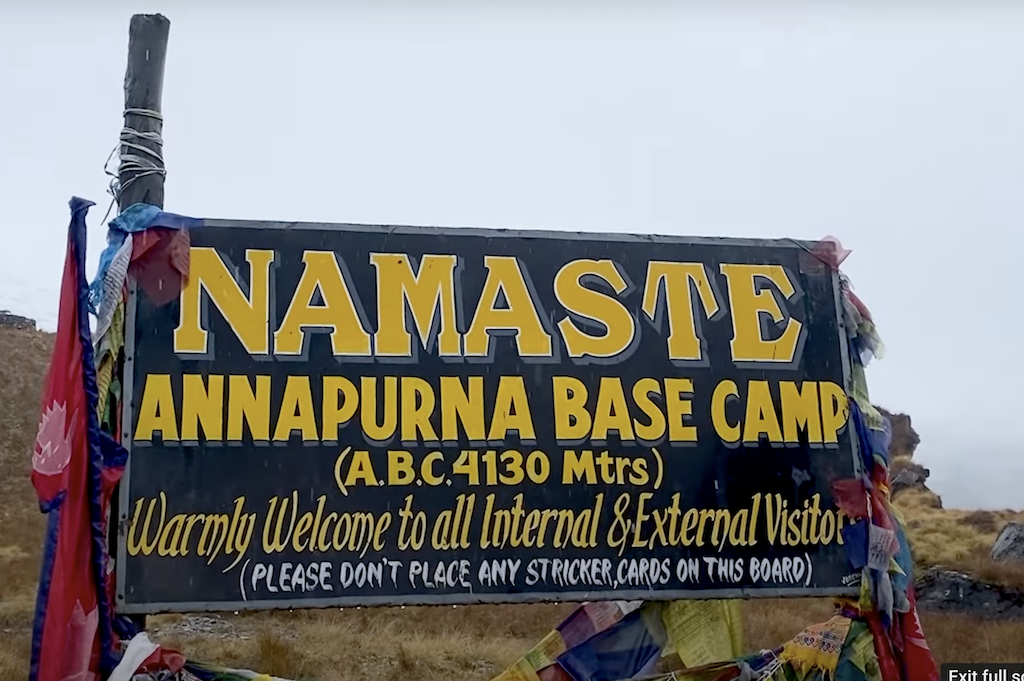
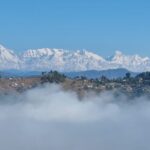
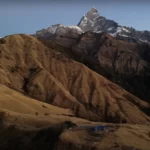
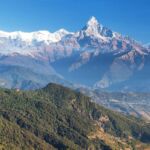

Leave a Reply